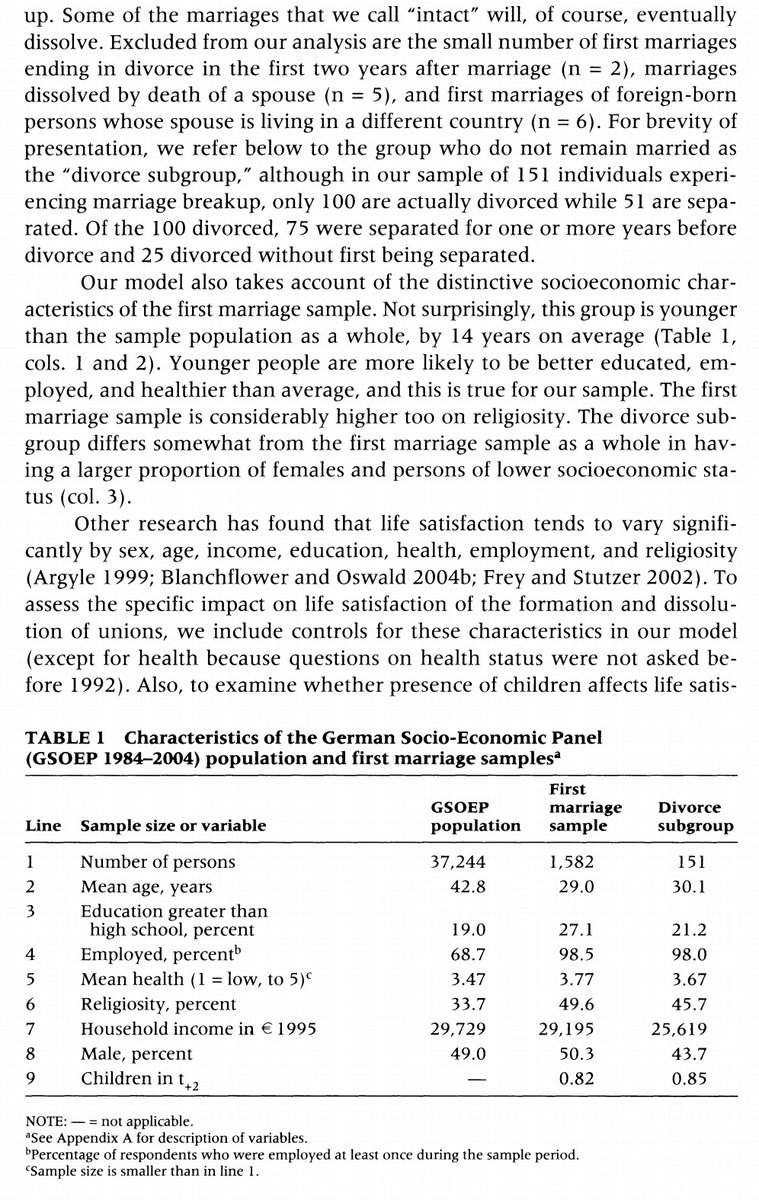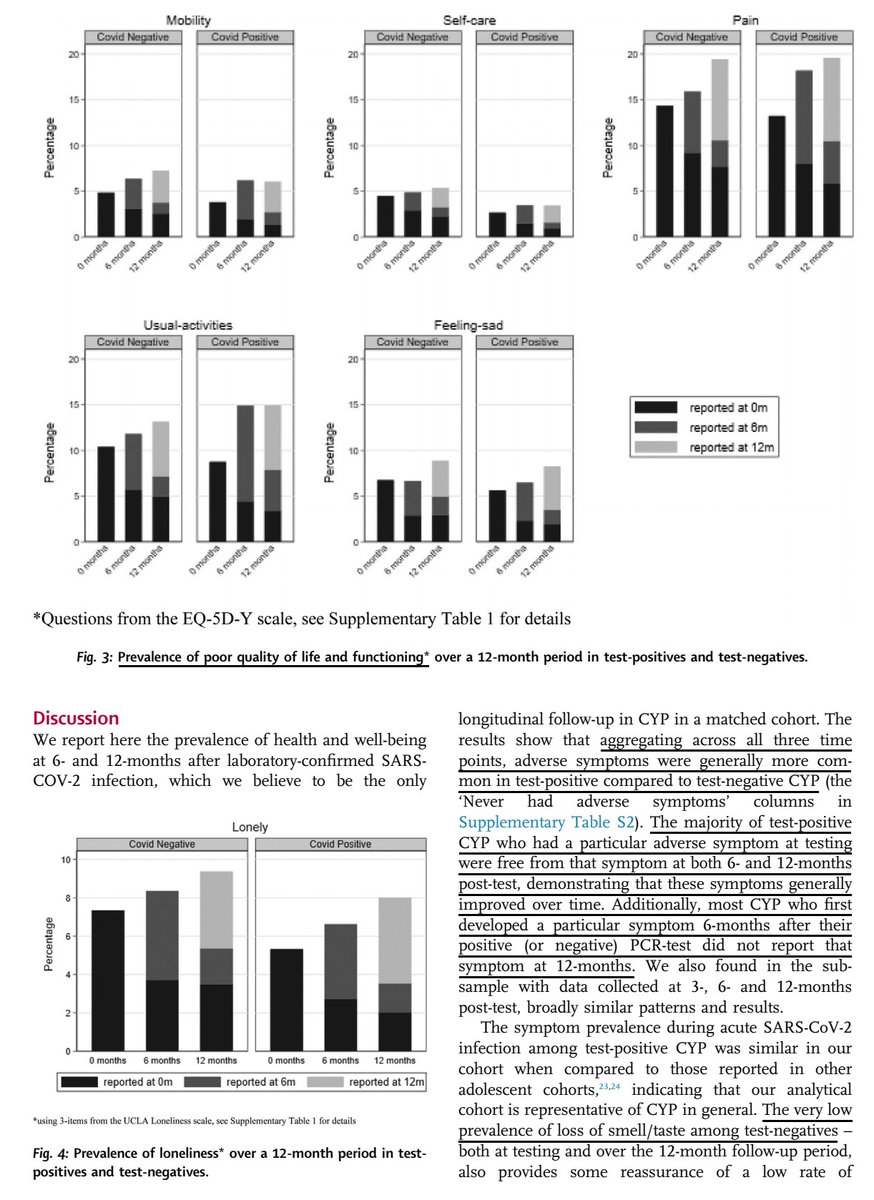1/ Ten Global Trends Every Smart Person Should Know (Bailey, Tupy)
"Negativity regarding prospects for humanity and the natural world is, in large part, mistaken. We show this using uncontroversial data taken from official and scientific sources." (p. 1)
amazon.com/Global-Trends-…

"Negativity regarding prospects for humanity and the natural world is, in large part, mistaken. We show this using uncontroversial data taken from official and scientific sources." (p. 1)
amazon.com/Global-Trends-…

2/ “Progress does not mean that everything gets better for everyone, everywhere, all the time. That would be a miracle, not progress.” Stephen Pinker
"The falling price of renewable energy sources incentivizes the switch away from fossil fuels.
"The falling price of renewable energy sources incentivizes the switch away from fossil fuels.
3/ "Increasingly abundant agriculture is globally reducing the percentage of people who are hungry while simultaneously freeing up land so that forests are now expanding in much of the world.
"News is bad news; steady progress is not news." (p. 2)
"News is bad news; steady progress is not news." (p. 2)
4/ “There is asymmetry—compare the amount of time needed to bring up & socialize an adult person and the amount of time needed to kill him in an accident, the amount of time to build a house and to destroy it in a fire, to make an airplane and to crash it.” Galtung and Ruge, 1965
5/ "Journalism focuses on dramatic things. The nature of news thus misleads viewers into thinking the world is in worse shape than it really is.
"Availability bias causes us to confuse what comes easily to mind with what is true." (p. 2)
More on this:
"Availability bias causes us to confuse what comes easily to mind with what is true." (p. 2)
https://twitter.com/ReformedTrader/status/1317876706414227457
6/ " “Judgment creep” is yet another explanation for pessimism: we are misled about the state of the world because we have a tendency to continually raise our threshold for success as we make progress, argue Harvard University psychologist Daniel Gilbert and his colleagues.
7/ “When problems become rare, we count more things as problems. Our studies suggest that when the world gets better, we become harsher critics of it, and this can cause us to mistakenly conclude that it hasn’t actually gotten better at all. Progress tends to mask itself.”
8/ "Instead of extracting resources from the many by the few, inclusive institutions respect individual liberty. They include democratic politics, strong private property rights, the rule of law, enforcement of contracts, freedom of movement, and a free press.
9/ "Inclusive institutions are the bases of the technological and entrepreneurial innovations that produced a historically unprecedented rise in living standards in those countries that embraced them, including the U.S., Japan, Australia, and the countries in Western Europe.
10/ "Societal disintegration, whether Roman, Tang, or Soviet, occurred in extractive regimes.
"Despite crises such as the Great Depression, there are no examples so far of countries with long-established inclusive institutions suffering similar collapses.
"Despite crises such as the Great Depression, there are no examples so far of countries with long-established inclusive institutions suffering similar collapses.
11/ "Confrontations between extractive & inclusive regimes, such as WWII and the Cold War, have generally been won by the latter. That suggests free-market democracies are resilient in ways that enable them to forestall or rise above shocks that destroy extractive regimes." (p.4)
12/ "Since 1820, the world’s economy has grown >100x, while world population grew somewhat less than 8x.
"From 1500 to 1820, world gross product grew 0.3% per year. As countries adopted freer markets, rule of law, and international trade, growth sped up to 3% per year." (p. 6)
"From 1500 to 1820, world gross product grew 0.3% per year. As countries adopted freer markets, rule of law, and international trade, growth sped up to 3% per year." (p. 6)
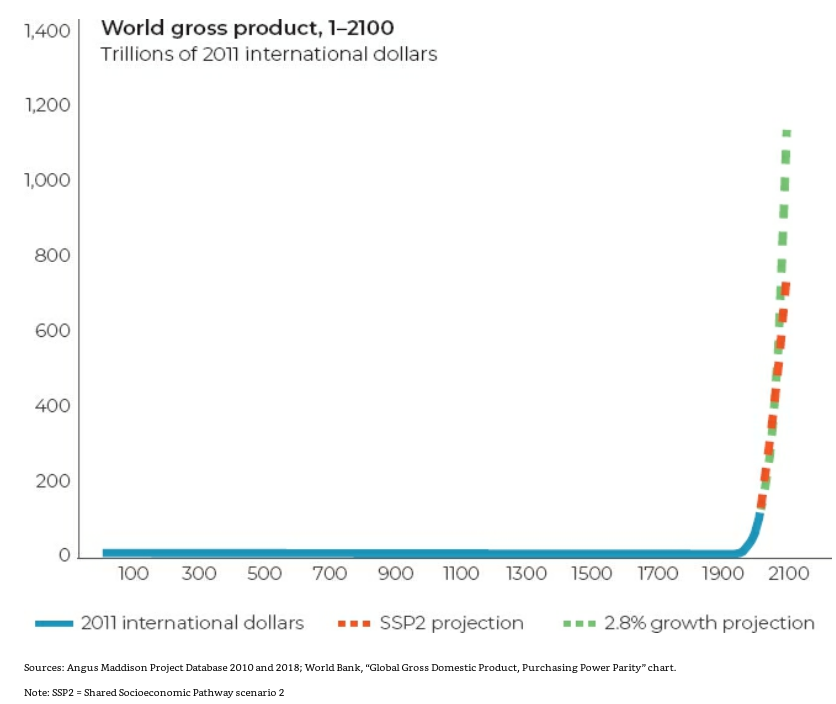
13/ "In 1820, 84% of the world lived in extreme poverty.
"The current rate of poverty reduction would result in <5% of the world’s population living in destitution in 2030.
"In 2015, the UN set the goal of eradicating extreme poverty by 2030 for all people everywhere." (p. 8)
"The current rate of poverty reduction would result in <5% of the world’s population living in destitution in 2030.
"In 2015, the UN set the goal of eradicating extreme poverty by 2030 for all people everywhere." (p. 8)

14/ "From 1980-2017, global hourly real income per person grew 80.1%. Per hour of work, commodities are 64.7% cheaper.
"Commodities that took 60 minutes of work to buy in 1980 took only 21 minutes of work in 2017. Resources have become more abundant relative to demand." (p. 10)
"Commodities that took 60 minutes of work to buy in 1980 took only 21 minutes of work in 2017. Resources have become more abundant relative to demand." (p. 10)
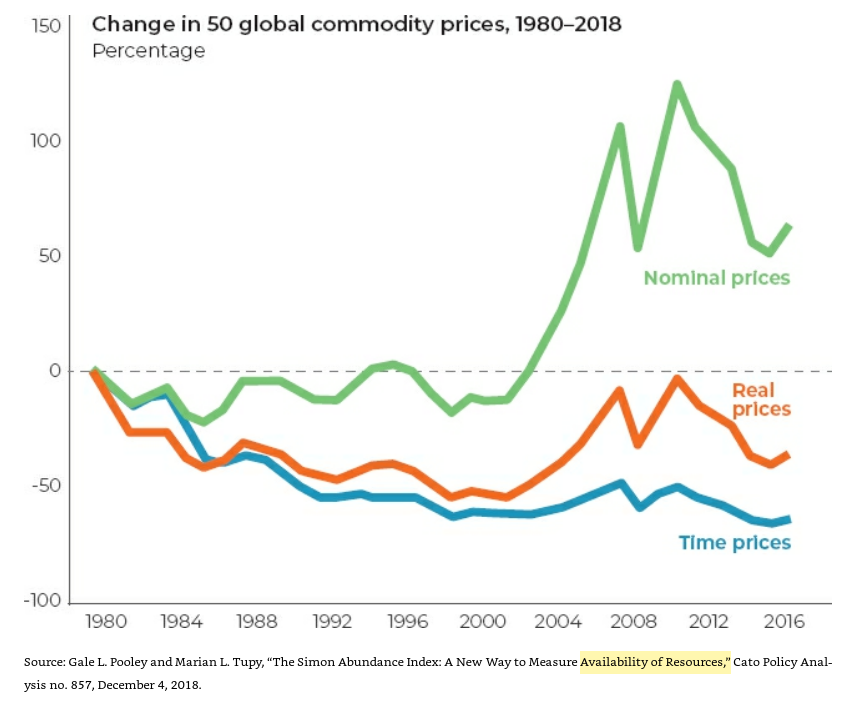
15/ "Steeply falling child mortality rates, increased urbanization, rising incomes, & the spread of political and economic freedom strongly correlate with families’ choosing to have fewer children. Parents aim to provide the few they do have with skills & social capital." (p. 12) 
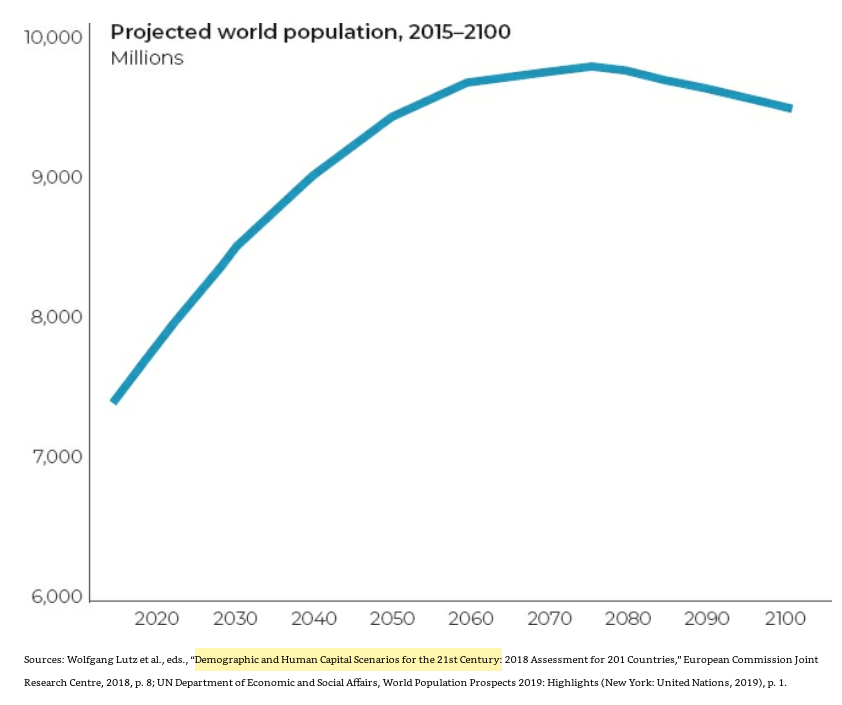
16/ "The greatest famine (45 million deaths) occurred when Mao Zedong used force to nationalize farmland (1958-62).
"Today, the poorest (sub-Saharan Africa) have food equivalent to Portugal's in the early 1960s. Famines have all but disappeared outside of war zones." (p. 14)
"Today, the poorest (sub-Saharan Africa) have food equivalent to Portugal's in the early 1960s. Famines have all but disappeared outside of war zones." (p. 14)
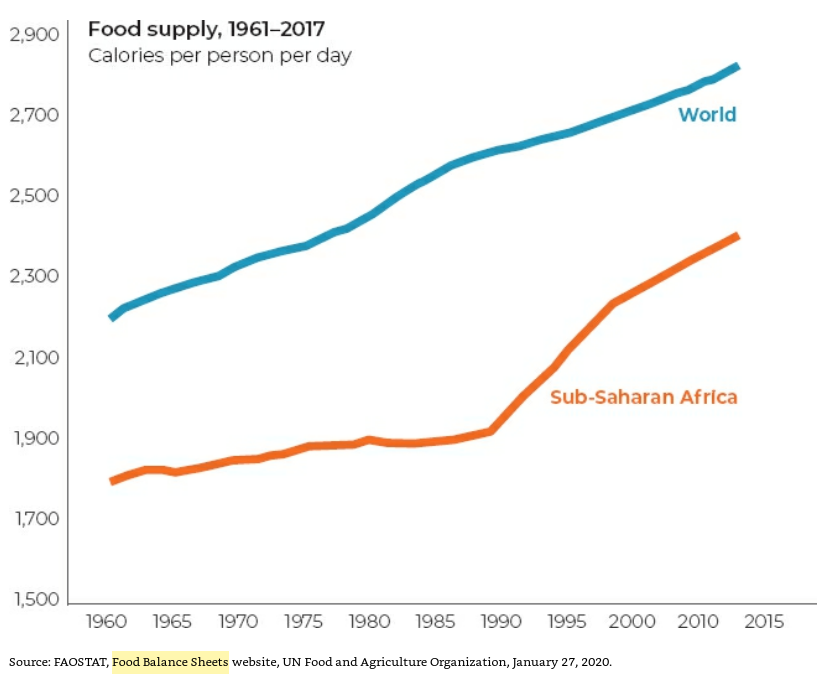
17/ "Using satellite data, researchers found that gains in forest area in temperate, subtropical, & boreal climatic zones are offsetting declines in the tropics [the latter primarily driven by agricultural expansion].
"Global forest growth & regrowth also act as a carbon sink."
"Global forest growth & regrowth also act as a carbon sink."
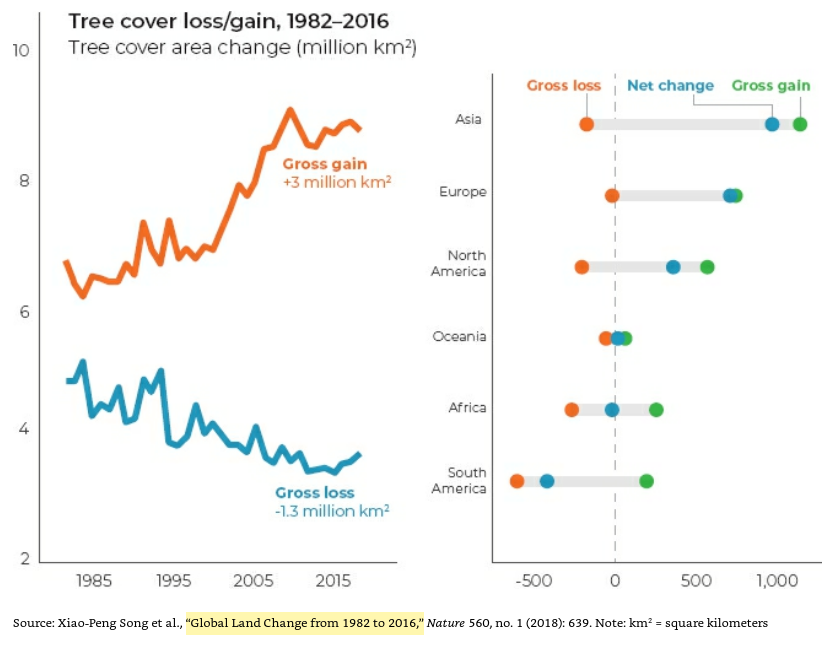
18/ "Historically, 80%-90% of humanity lived in rural areas and worked in agriculture. Today, <2% do.
"Before mechanization, farm work was physically exhausting and poorly paid, helping explain why people moved to the cities. Cities were the engines of liberation." (p. 18)
"Before mechanization, farm work was physically exhausting and poorly paid, helping explain why people moved to the cities. Cities were the engines of liberation." (p. 18)

19/ "Over the past half century, wars between countries have become rarer, and those that do occur kill fewer people. War between states has become a rare event.
"The trend in the number of interstate wars has generally been downward since the end of World War II." (p. 22)

"The trend in the number of interstate wars has generally been downward since the end of World War II." (p. 22)
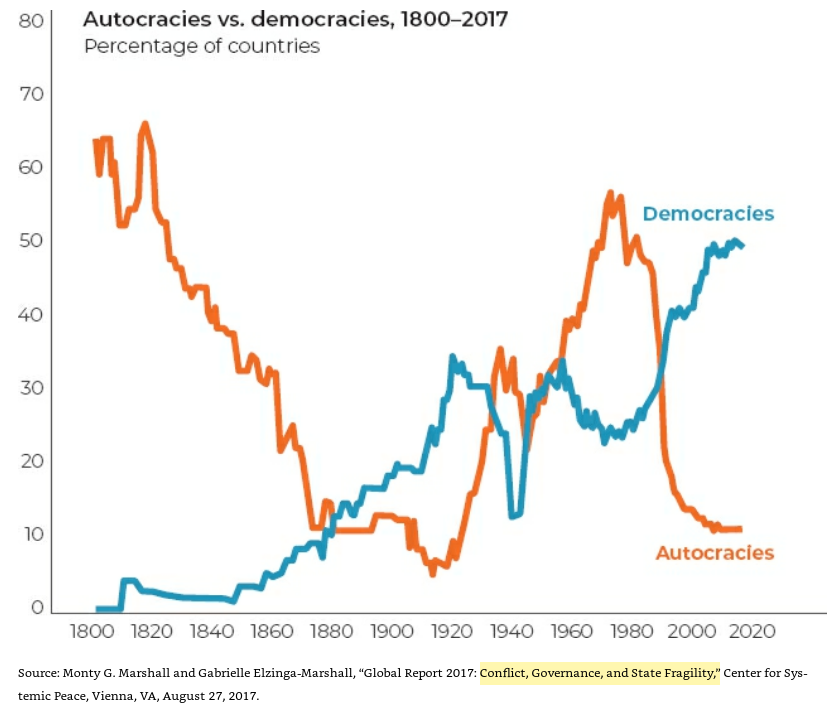
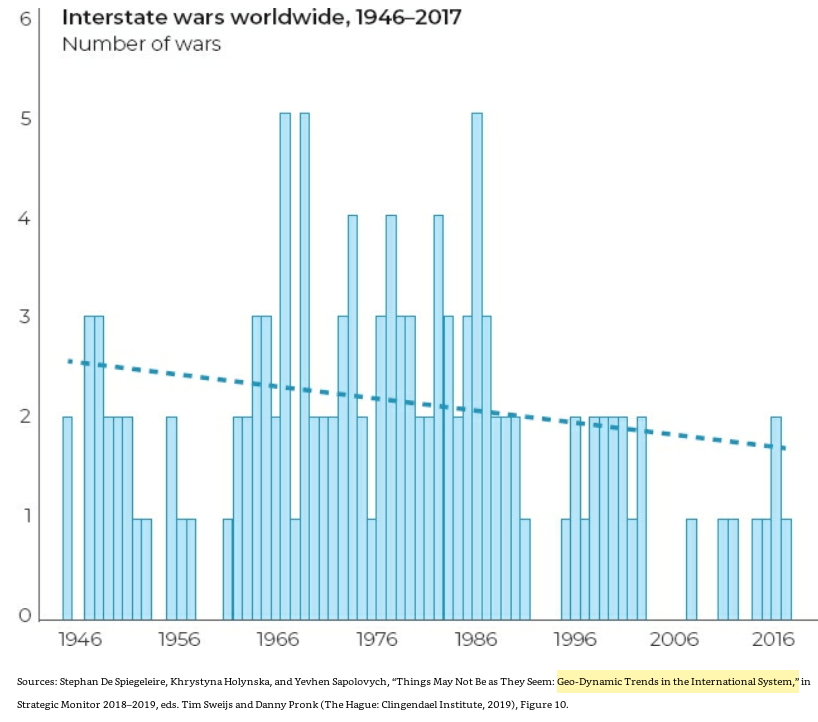
20/ "HDI (scale of 0-1) includes life expectancy at birth, mean years of schooling for adults, expected years of schooling for children, and income per capita (PPP dollars).
"HDI in developing countries is growing twice as fast as that in highly-developed OECD countries." (p.27)
"HDI in developing countries is growing twice as fast as that in highly-developed OECD countries." (p.27)
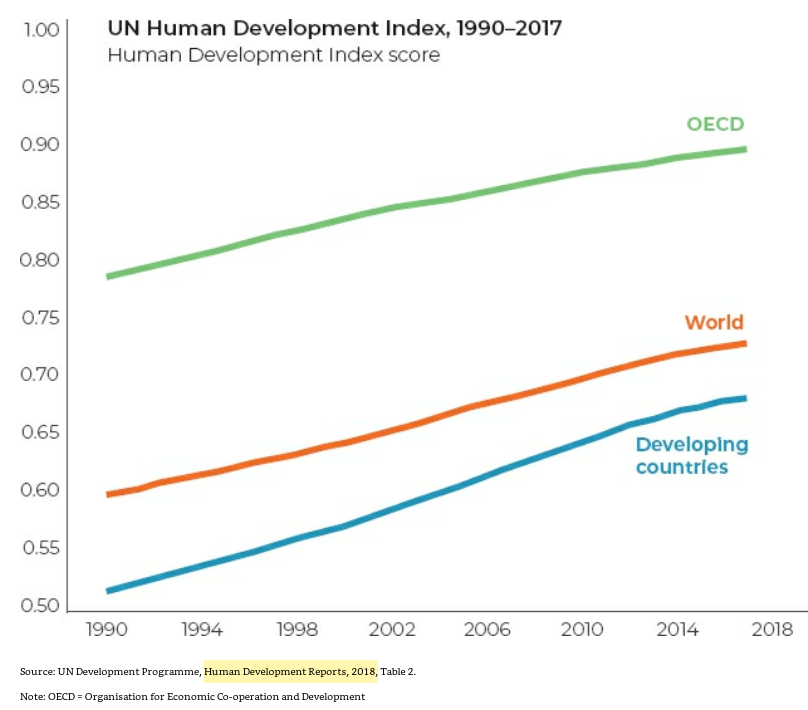
21/ "Average global income per person per year rose at a compound annual rate of 1.72% between 1900 and 2016.
"If that trend continues, average global income will reach an inflation-adjusted $60,955 per person per year in 2100 (all figures in 2011 U.S. dollars)." (p. 31)
"If that trend continues, average global income will reach an inflation-adjusted $60,955 per person per year in 2100 (all figures in 2011 U.S. dollars)." (p. 31)
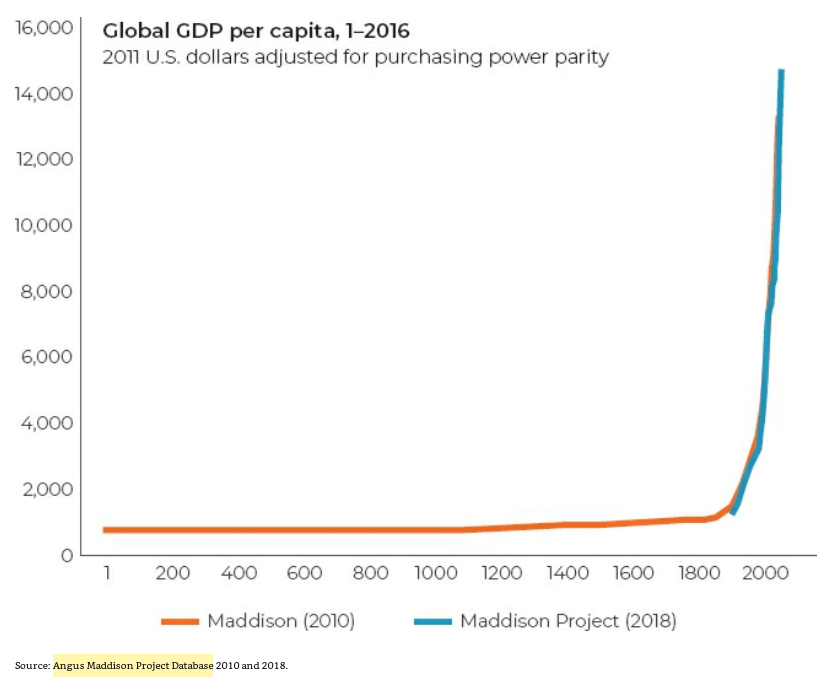
22/ "Global income inequality (indicated by Gini values), both within countries and across countries, started to decline in the 1980s." (p. 33) 

23/ "As a general rule, slum dwellings lack access to improved water and sanitation, sufficient living area, security of tenure, durability, and adequate protection from the elements.
"In 1990 (2014), 47% (30%) of the world’s urban population lived in slums." (p. 35)
"In 1990 (2014), 47% (30%) of the world’s urban population lived in slums." (p. 35)
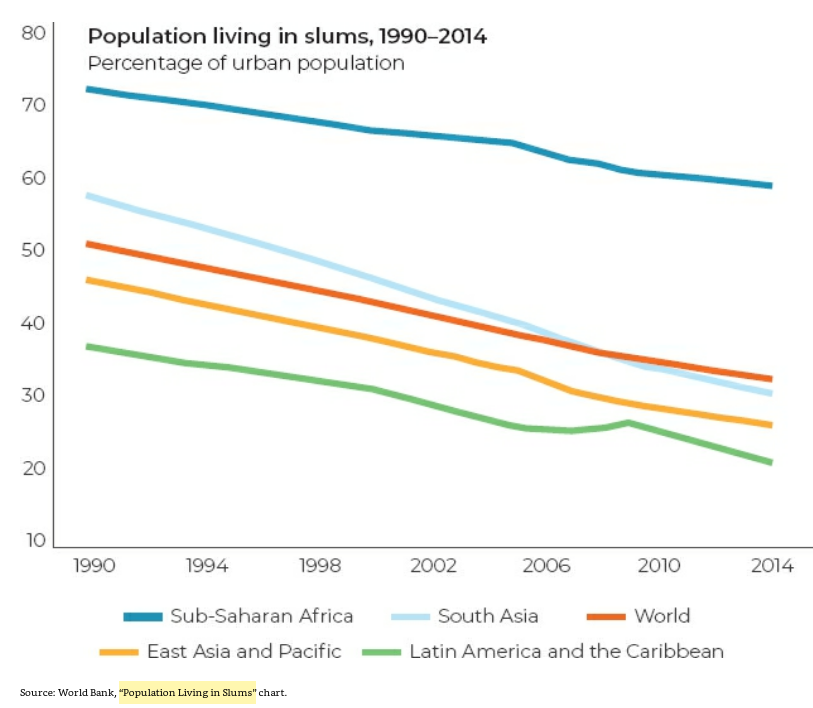
24/ "Today, women vote in all countries except the Vatican City State, where only cardinals have the right to elect the pope, and in countries where elections remain substantially meaningless.
"Global fertility rates plummeted from 5 in 1960 to 2.43 children today." (p. 37)

"Global fertility rates plummeted from 5 in 1960 to 2.43 children today." (p. 37)
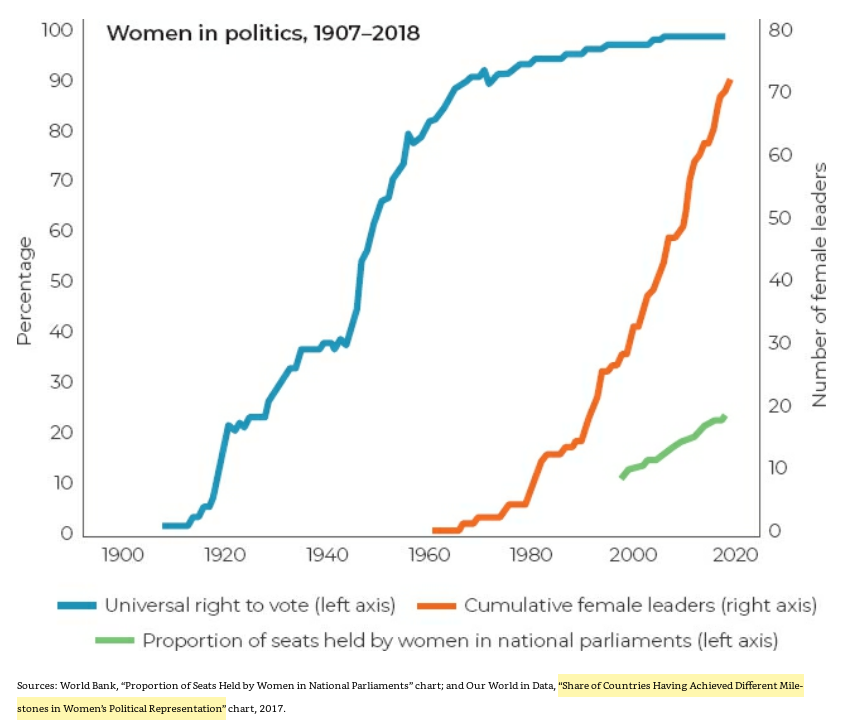

25/ "School enrollment is rising. (Because some students are overage, underage, or grade repeaters, the gross rate can exceed 100%.)
"Until the Industrial Revolution, low agricultural productivity meant children had to work the land to produce enough food to survive." (p. 45)


"Until the Industrial Revolution, low agricultural productivity meant children had to work the land to produce enough food to survive." (p. 45)

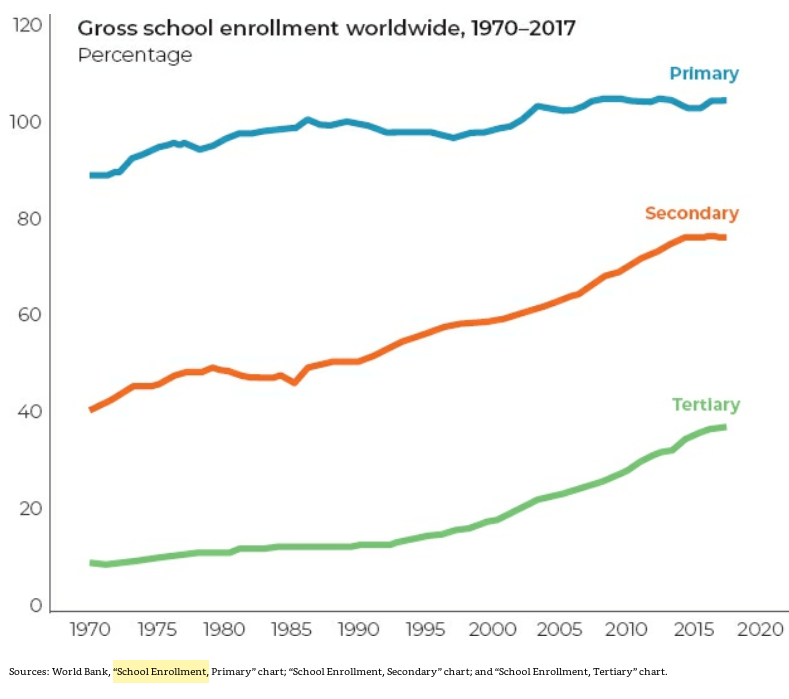

26/ "People have been getting smarter. The average IQ score of each generation has increased, so IQ tests are renormed (made harder) every 15–20 years by resetting the mean score to 100.
"A person with a score of 100 in 1965 would score just 85 points on current tests." (p. 47)
"A person with a score of 100 in 1965 would score just 85 points on current tests." (p. 47)
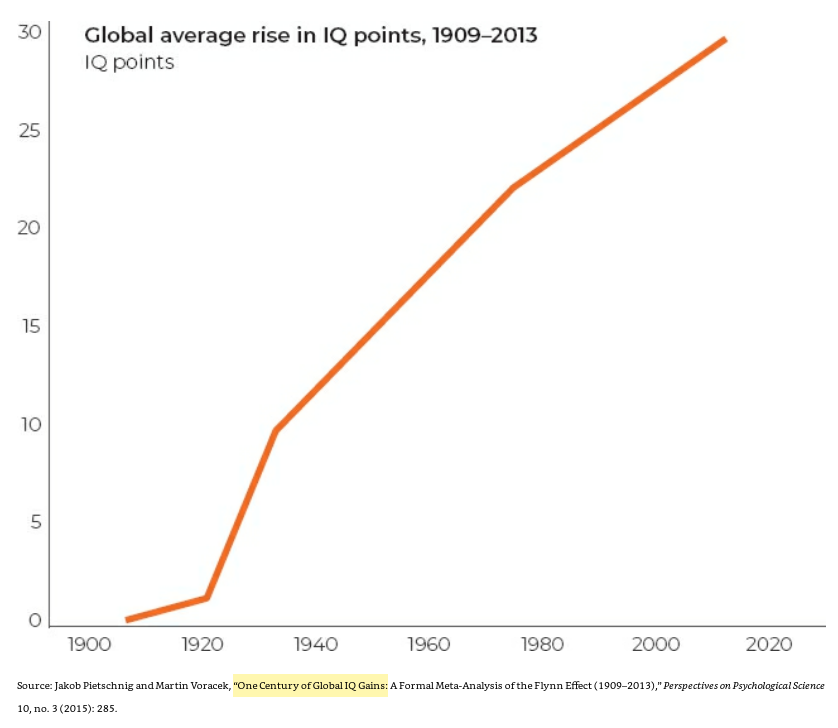
27/ "By 2006, the share of countries with a free press had increased to 38%, whereas the not-free fraction had fallen to 32%.
"However, the global trend toward greater press freedom may recently have been set back somewhat." (p. 51)
"However, the global trend toward greater press freedom may recently have been set back somewhat." (p. 51)

28/ "Global life expectancy has more than doubled.
"The death rate itself is also in retreat.
"Visibly fewer babies are dying.
"Maternal mortality has been falling, first in Western countries, then in the rest of the world." (p. 60)



"The death rate itself is also in retreat.
"Visibly fewer babies are dying.
"Maternal mortality has been falling, first in Western countries, then in the rest of the world." (p. 60)
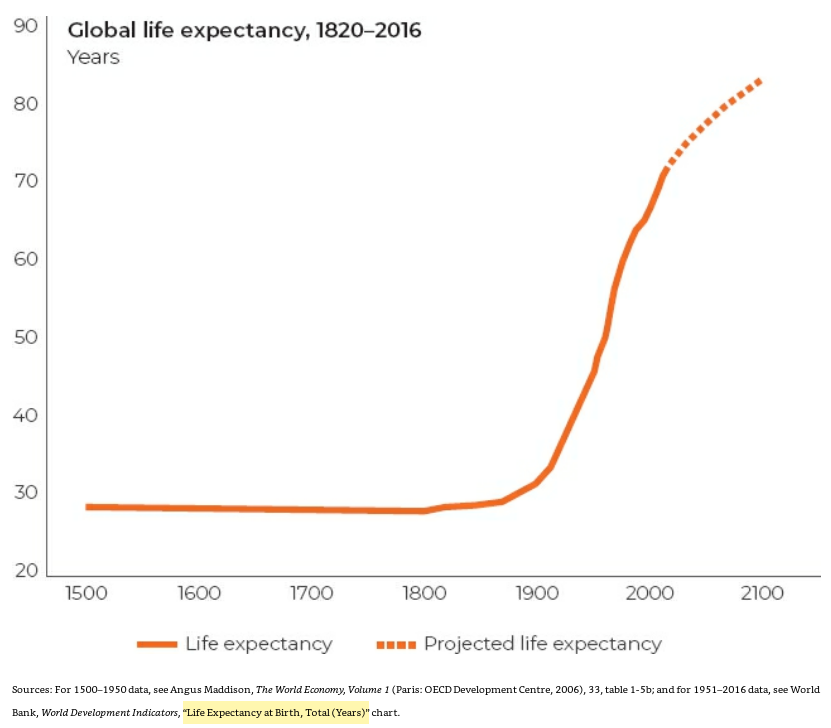

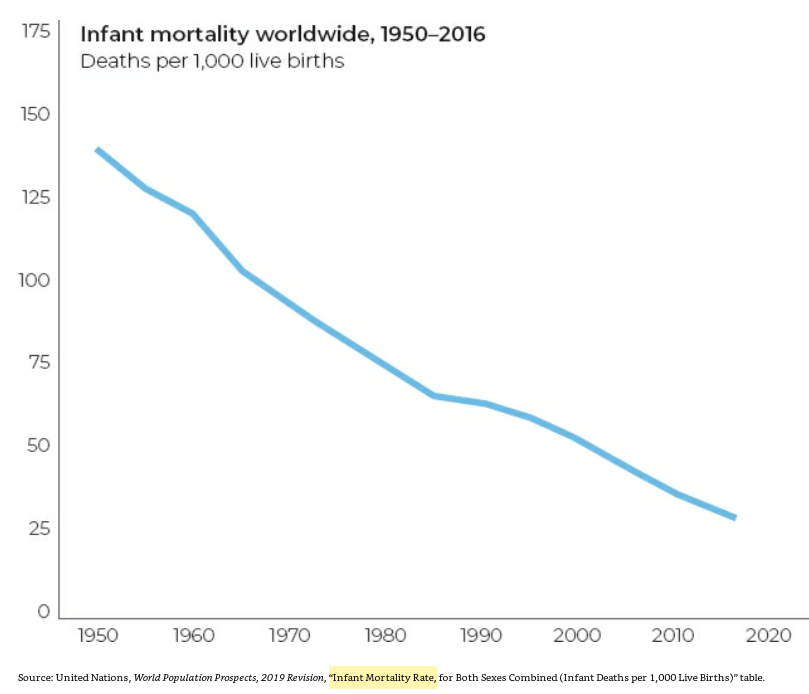

29/ "An organized effort by national governments, international organizations, NGOs, and the private sector during the second half of the 20th century has brought a plethora of vaccines to the world’s most distant communities, alleviating human suffering." (p. 62) 
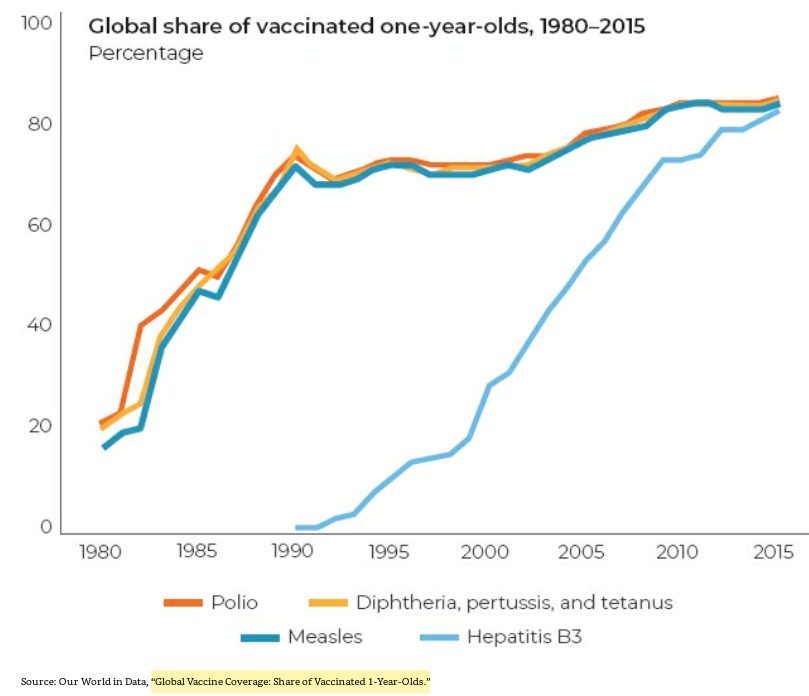
30/ "In 2000, highly active antiretroviral therapy for HIV cost more than US$10,000 per patient per year. “Within a year,” the United Nations found, the price “plummeted to US$350 per year when generic manufacturers began to offer treatment.“ " (p. 64) 
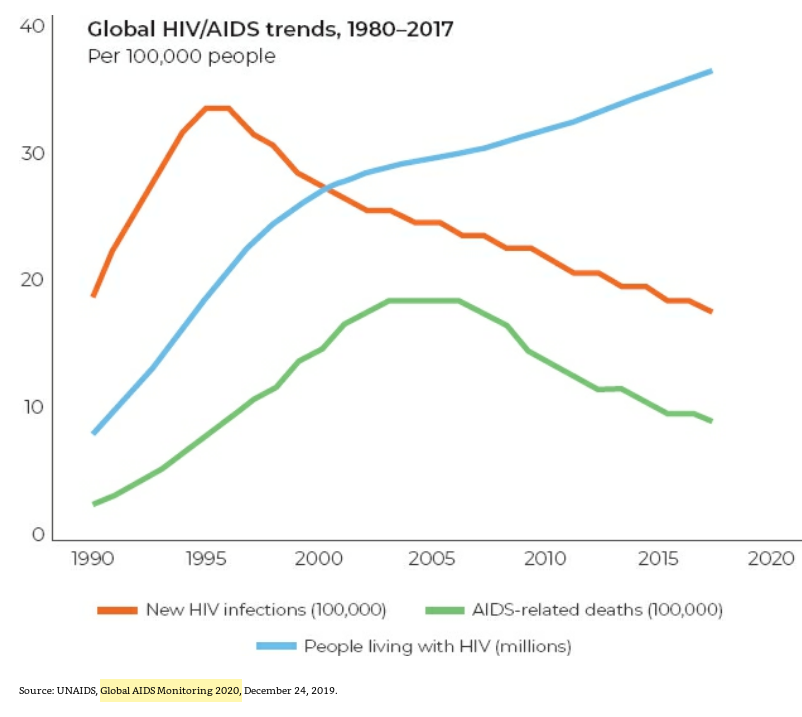
31/ "Even as the tuberculosis detection improved, the known incidence still declined. The global tuberculosis treatment success rate has risen as well.
"The malaria death rate dropped from 12.6 per 100,000 in 1990 to 8.2 per 100,000 in 2017." (p. 68)

"The malaria death rate dropped from 12.6 per 100,000 in 1990 to 8.2 per 100,000 in 2017." (p. 68)


32/ "In 1990, 161/100,000 globally died from cancer—by 2016, this had fallen to 134/100,000.”
"Between 2000 and 2015, the share of women over the age of 15 who smoked (even occasionally) fell from 11% to 6.4%. Among men, it fell from 44% to 35% over the same period." (p. 72)

"Between 2000 and 2015, the share of women over the age of 15 who smoked (even occasionally) fell from 11% to 6.4%. Among men, it fell from 44% to 35% over the same period." (p. 72)
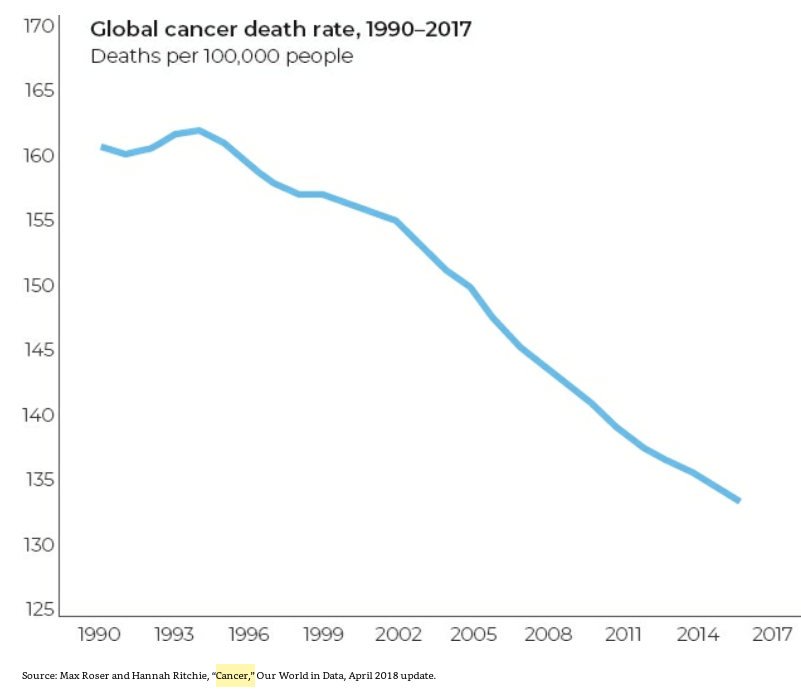

33/ "On Dec 31, 2019, a cluster of “pneumonia” cases was first reported in Wuhan. On Jan 7, 2020, Chinese scientists identified the novel coronavirus responsible for the outbreak. And by January 12, they had sequenced its genetic code and made the data publicly available." (p.74) 
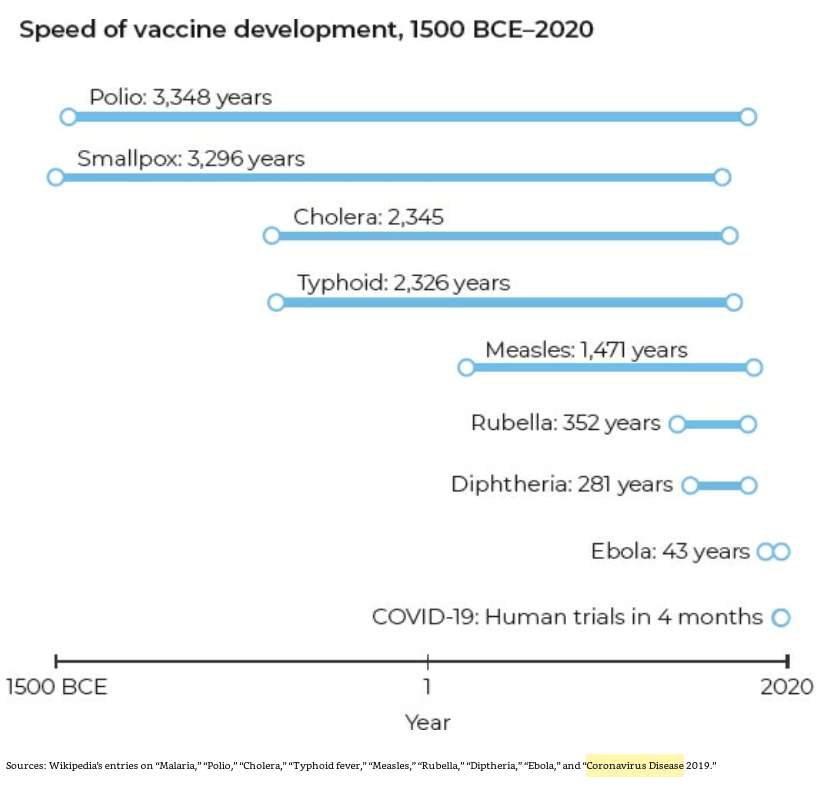
34/ "The global homicide rate has fallen 17% over a remarkably short period of 26 years (0.7% per year).
“Almost half of all homicides worldwide occurred in just 23 countries that account for 10% of the global population.” (p. 77)
“Almost half of all homicides worldwide occurred in just 23 countries that account for 10% of the global population.” (p. 77)

35/ "Since World War II, there has been a steep decline in the rate at which soldiers and civilians are killed in combat.
"The number of civilians killed in genocides is also a fraction of what it was in earlier decades." (p. 83)

"The number of civilians killed in genocides is also a fraction of what it was in earlier decades." (p. 83)
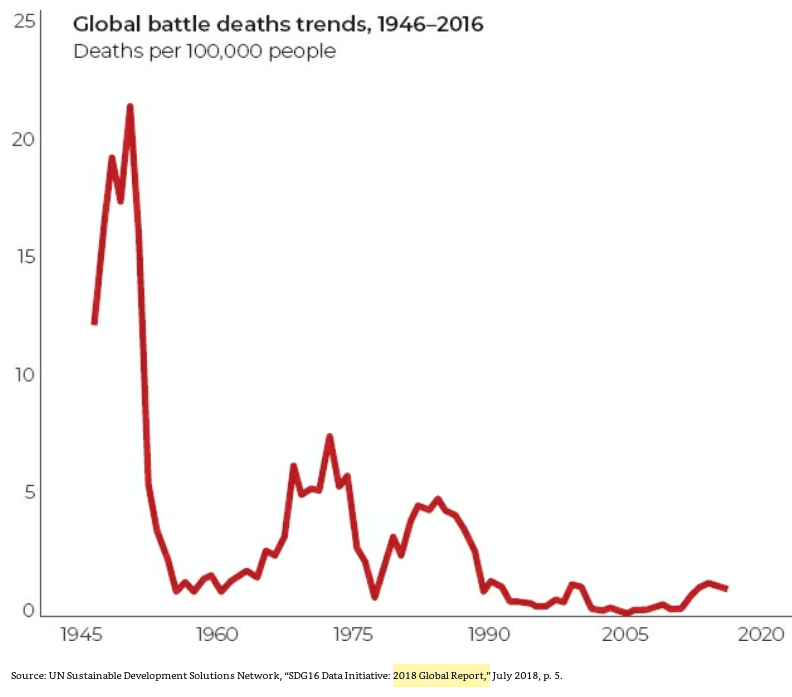

36/ "Armed forces have expanded at half the population growth rate. Humanity enjoys a historically unique period of interstate peace and a decline in militarization.
"The number of nuclear powers has increased since 1991, but the number of warheads has declined by 86%." (p. 89)


"The number of nuclear powers has increased since 1991, but the number of warheads has declined by 86%." (p. 89)
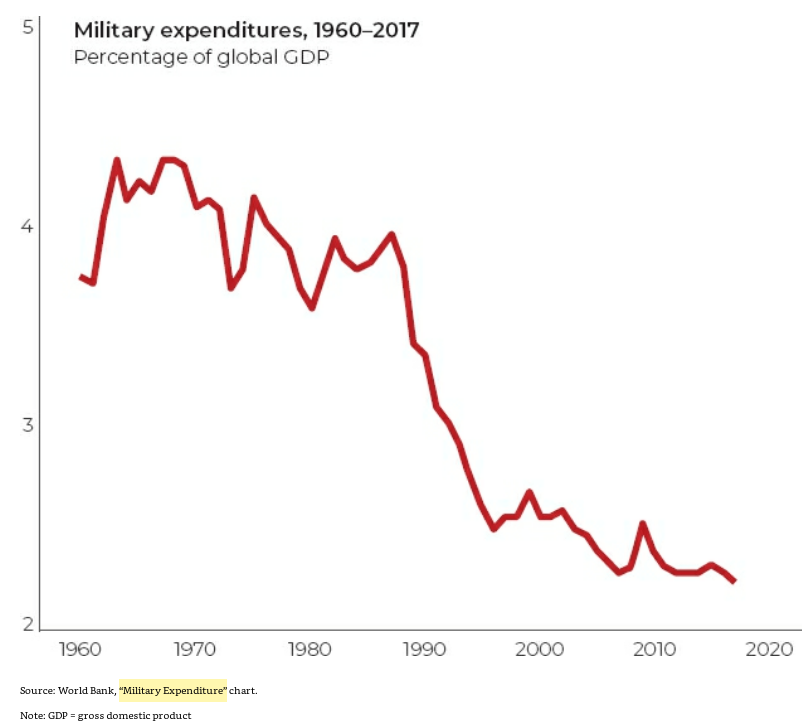

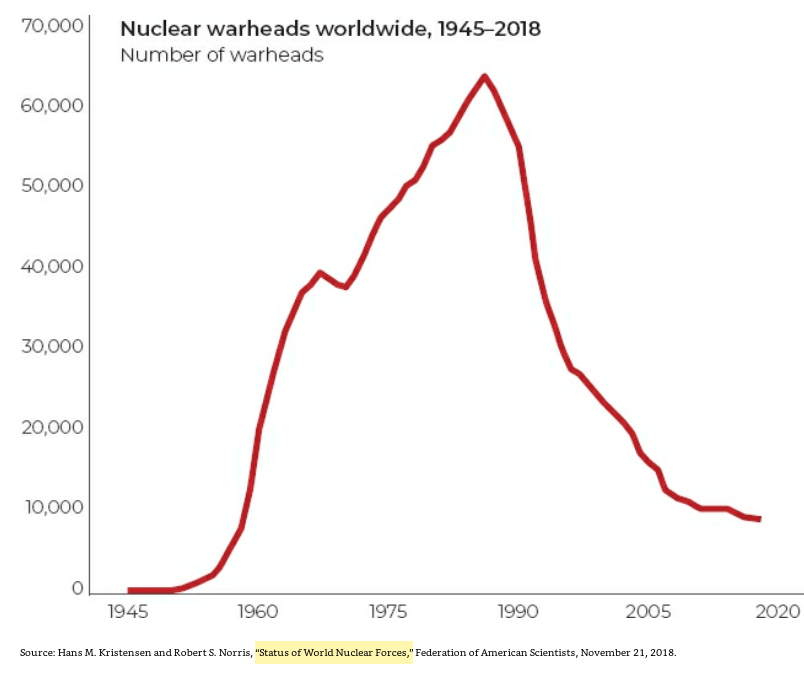
37/ "The overall number of hours worked has declined in tandem with increasing prosperity. The richer the country, the less people tend to work.
"With 1,763 work-hours per year, the United States was squarely in the middle of the pack in 2017." (p. 92)
"With 1,763 work-hours per year, the United States was squarely in the middle of the pack in 2017." (p. 92)

38/ "Agricultural work must have been unappealing, considering that so many people in the early 19th century preferred factory work over farm work.
"Even in 2011, the fatality rate for agricultural workers was 7 times higher than for all workers in private industry." (p. 94)
"Even in 2011, the fatality rate for agricultural workers was 7 times higher than for all workers in private industry." (p. 94)

39/ "Before the mechanization of agriculture, which increased farm productivity, there were no food surpluses to sustain idle hands—including children's. It was common for working-class children to start working from the age of 7 to provide for the survival of the family." (p.96) 

40/ "By and large, people moved from farms to factory work in the cities willingly: the latter provided higher wages, greater independence, & cultural stimulation.
"Only in very poor countries, such as Bhutan and Zimbabwe, does agriculture still employ >50% of laborers." (p. 98)
"Only in very poor countries, such as Bhutan and Zimbabwe, does agriculture still employ >50% of laborers." (p. 98)
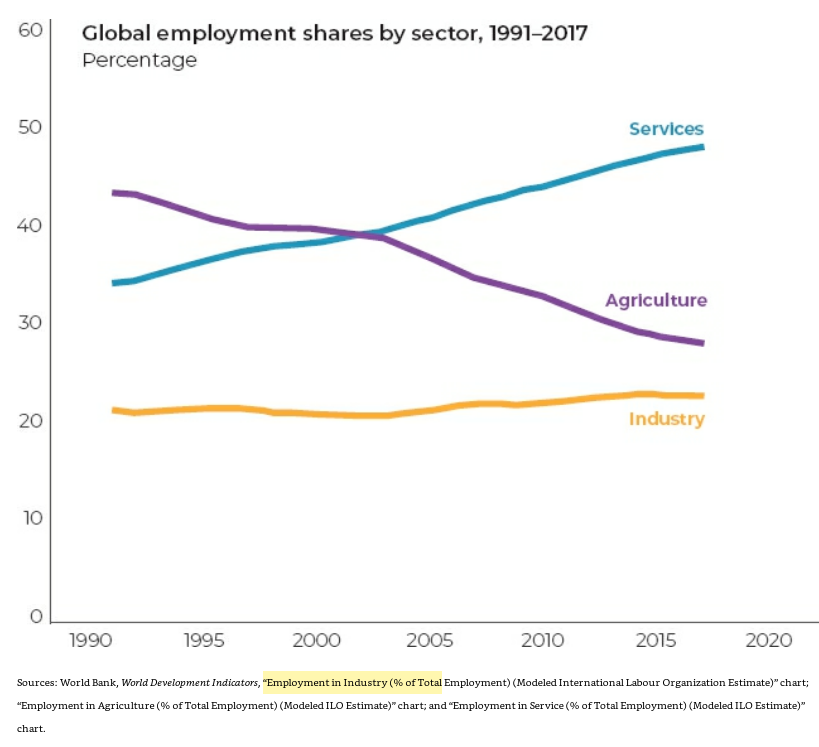
41/ "The wage gap between men and women in narrowing.
"Once the relevant differences in the choice of occupations, college majors, and length of time in the workplace are adjusted for, the wage gap in many highly developed nations narrows to insignificance." (p. 100)
"Once the relevant differences in the choice of occupations, college majors, and length of time in the workplace are adjusted for, the wage gap in many highly developed nations narrows to insignificance." (p. 100)

42/ "Slavery among African tribes, especially in West Africa, was common until very recently. Mauritania became the last country to outlaw it in 1981.
"As chattel slavery disappeared, our definition has expanded to include forced labor, sexual slavery, and debt bondage." (p.102)
"As chattel slavery disappeared, our definition has expanded to include forced labor, sexual slavery, and debt bondage." (p.102)
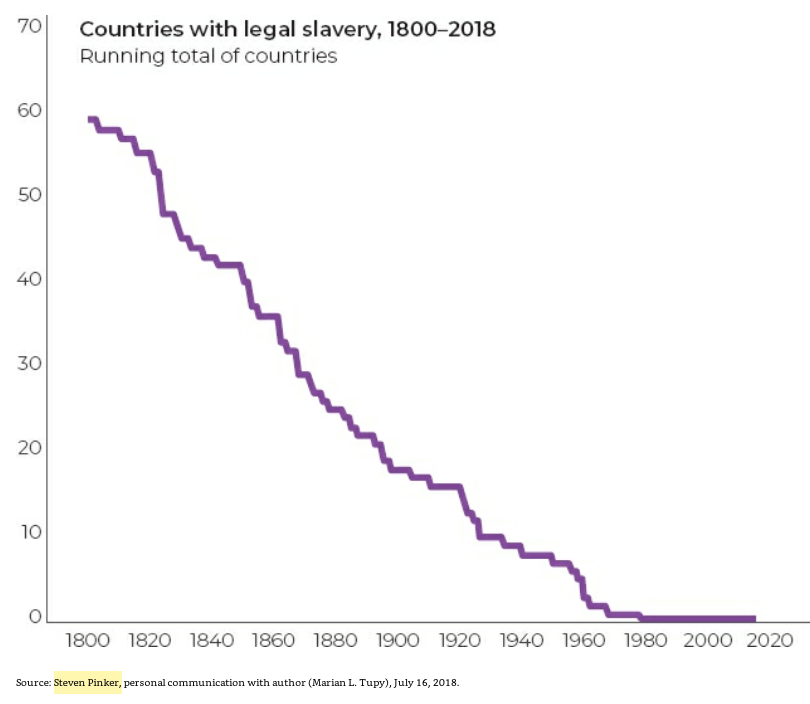
43/ "Technological improvements are likely to continue to reduce fuel consumption per dollar of output, and, consequently, lower CO₂ emissions even further." (p. 109) 
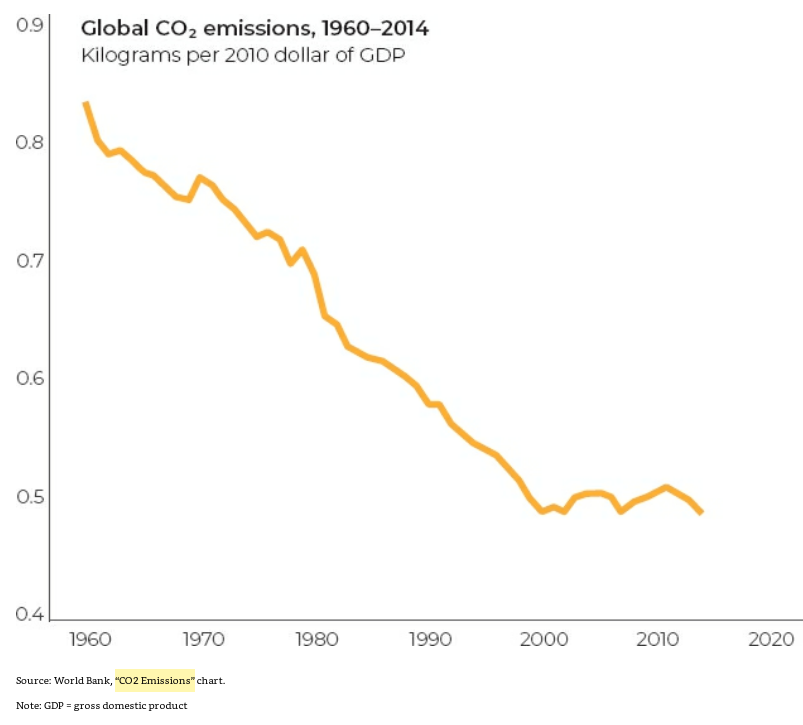
44/ "Instead of running out, proven reserves of crude oil have nearly tripled since 1980.
"Cheap and clean natural gas has now displaced coal as the chief fuel for generating electricity in the U.S. Natural gas also produces half the CO₂ that coal does." (p. 113)

"Cheap and clean natural gas has now displaced coal as the chief fuel for generating electricity in the U.S. Natural gas also produces half the CO₂ that coal does." (p. 113)
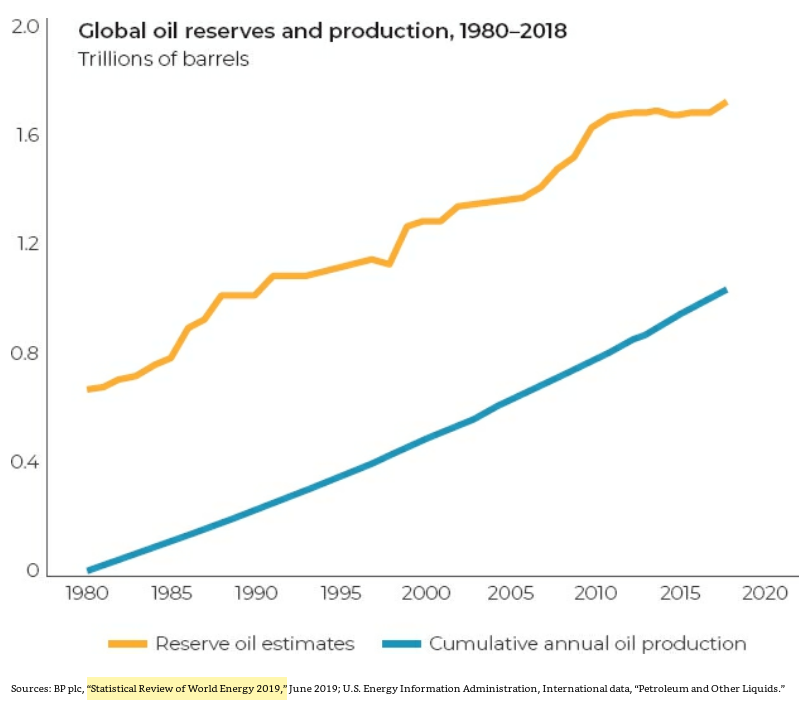
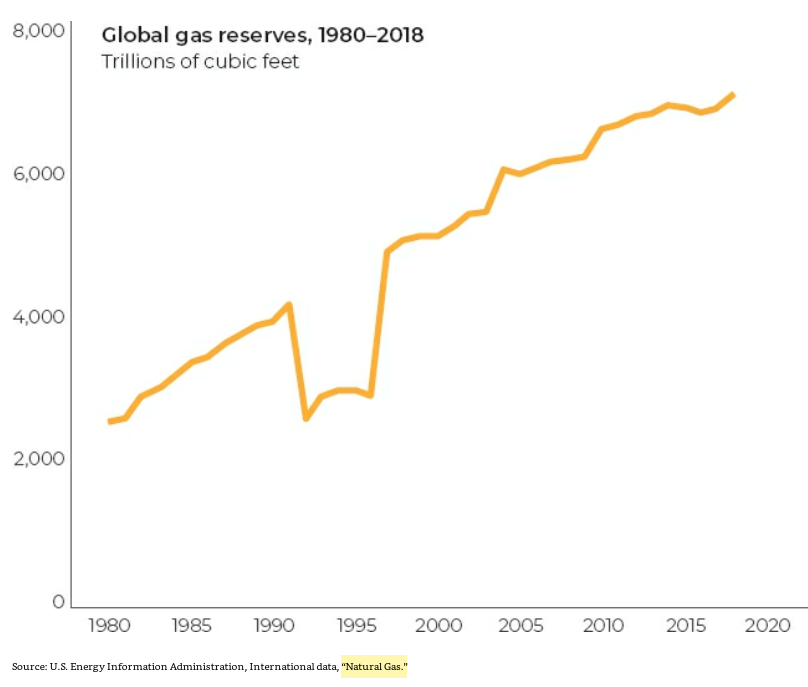
45/ "Modern devices combine functions that previously required myriad separate devices.
"Smart phones can reduce material use by a factor of 300, power use by a factor of 100, and standby energy use by a factor of 30." (p. 117)
"Smart phones can reduce material use by a factor of 300, power use by a factor of 100, and standby energy use by a factor of 30." (p. 117)

46/ "The biggest famines occurred in communist regimes (up to 10 million deaths under Stalin & 45 million under Mao Zedong).
"In the 21st century, violence is largely responsible for the recent uptick in undernourishment. Famines have disappeared outside of war zones." (p. 120)
"In the 21st century, violence is largely responsible for the recent uptick in undernourishment. Famines have disappeared outside of war zones." (p. 120)

47/ "Global cereal yields and fish production have increased.
"People are eating more meat and consuming more milk products.
"Only 3 kg of cereals are needed to produce 1 kg of meat: 86% of global livestock feed intake consists of grasses and inedible crop residues." (p. 128)



"People are eating more meat and consuming more milk products.
"Only 3 kg of cereals are needed to produce 1 kg of meat: 86% of global livestock feed intake consists of grasses and inedible crop residues." (p. 128)
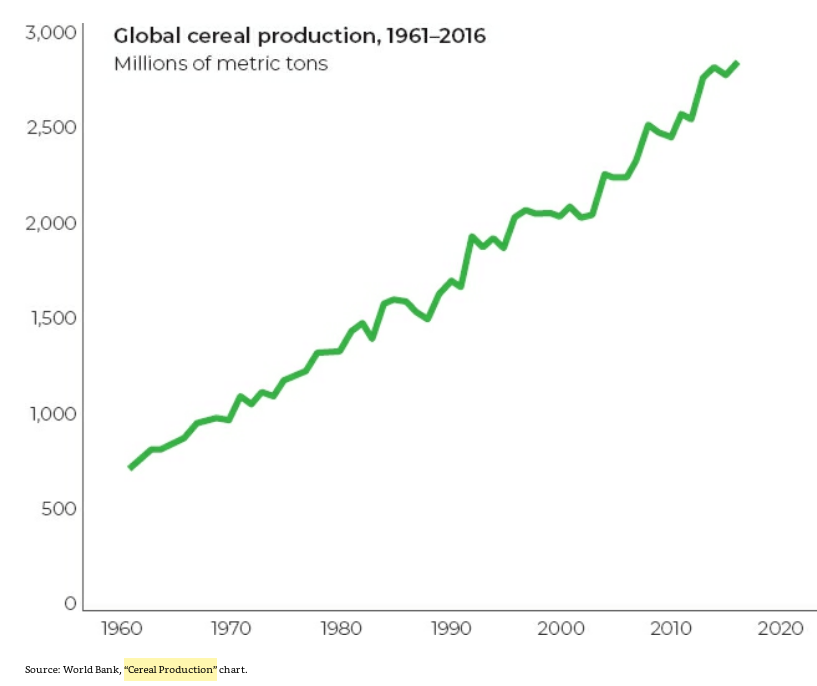

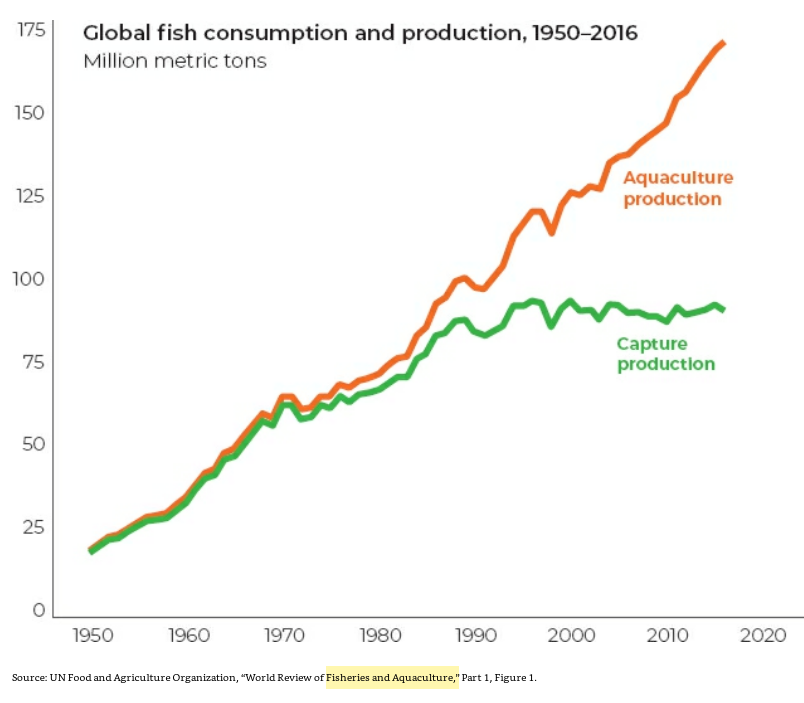
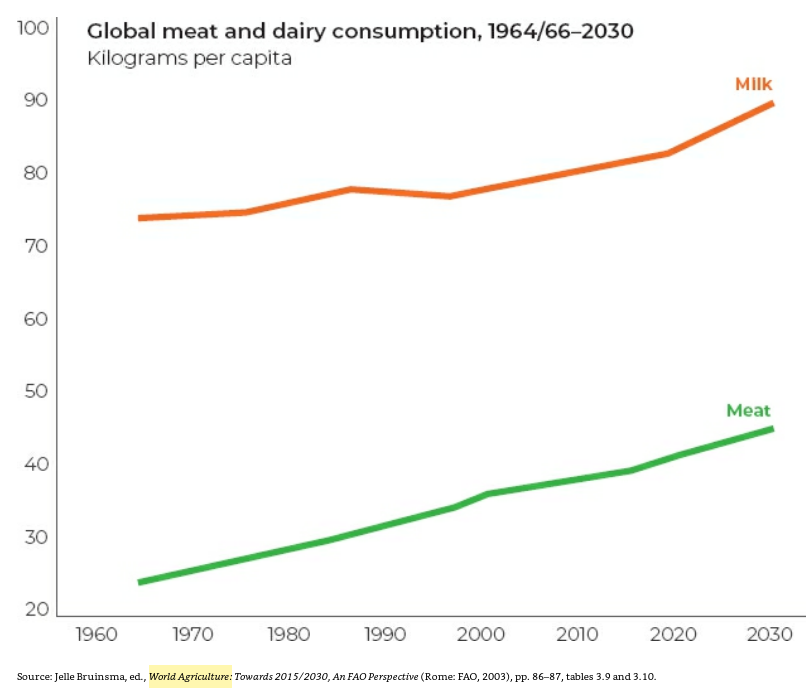
48/ "Today, practically everyone in advanced economies has access to electricity.
"Efficiency improvements have collapsed the price of lighting. It takes 58 hours gathering wood to produce 1000 lumen-hours of light. In 1992, 0.00012 hours of labor were required." (p. 133)

"Efficiency improvements have collapsed the price of lighting. It takes 58 hours gathering wood to produce 1000 lumen-hours of light. In 1992, 0.00012 hours of labor were required." (p. 133)
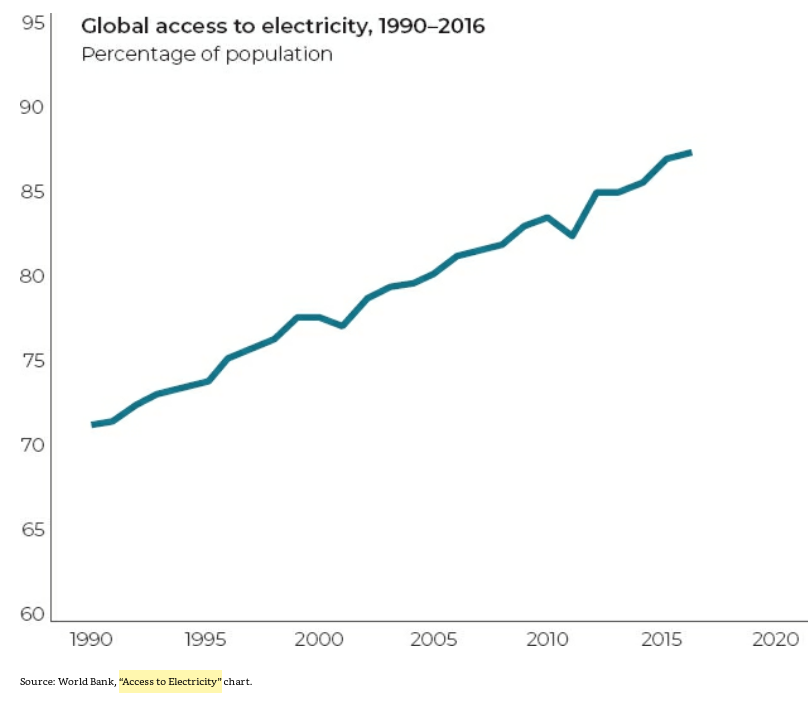
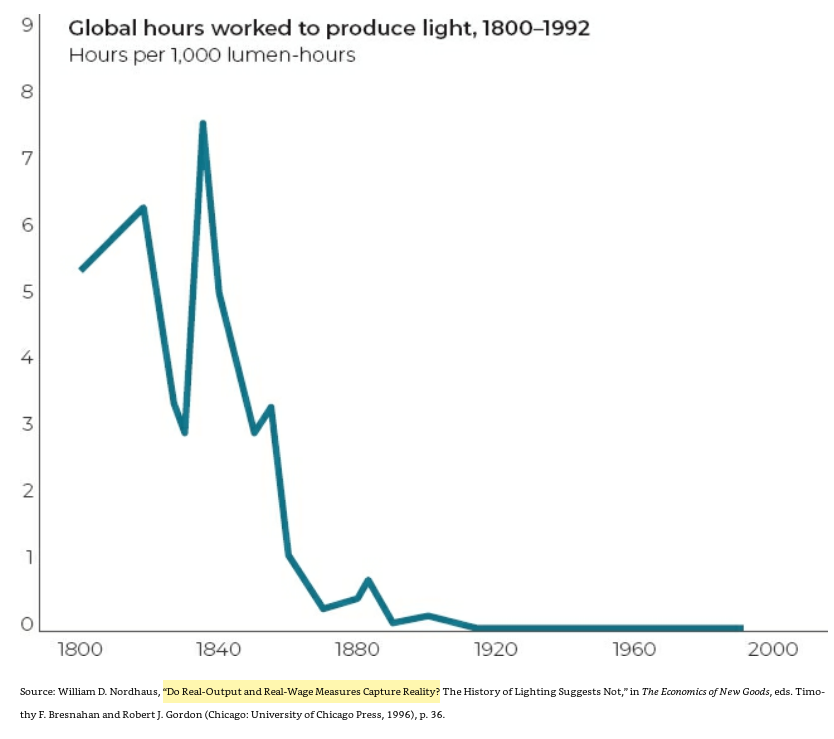
49/ "The cost of solar cells falls by 20% with each doubling of manufacturing capacity (automation, quality control, materials reduction).
"They may be superseded by even cheaper and more efficient technologies, such as perovskite cells at a projected $0.10 per watt." (p. 135)
"They may be superseded by even cheaper and more efficient technologies, such as perovskite cells at a projected $0.10 per watt." (p. 135)
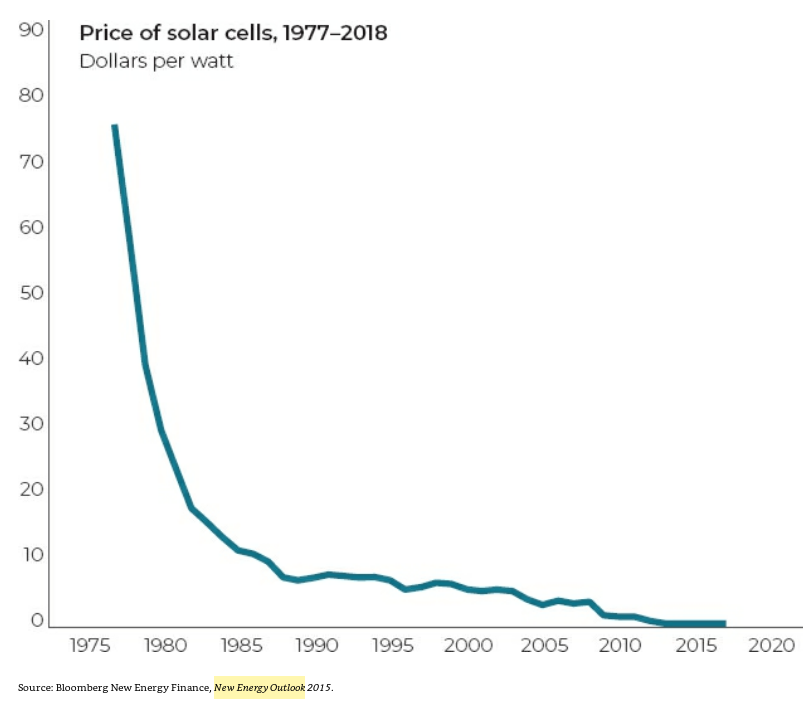
50/ "The number of people without access to clean water fell from 1.26 billion to 666 million from 1990 to 2015.
"Today, poor sanitation (failure to separate human excrement from human contact) is mostly limited to very poor countries." (p. 139)

"Today, poor sanitation (failure to separate human excrement from human contact) is mostly limited to very poor countries." (p. 139)
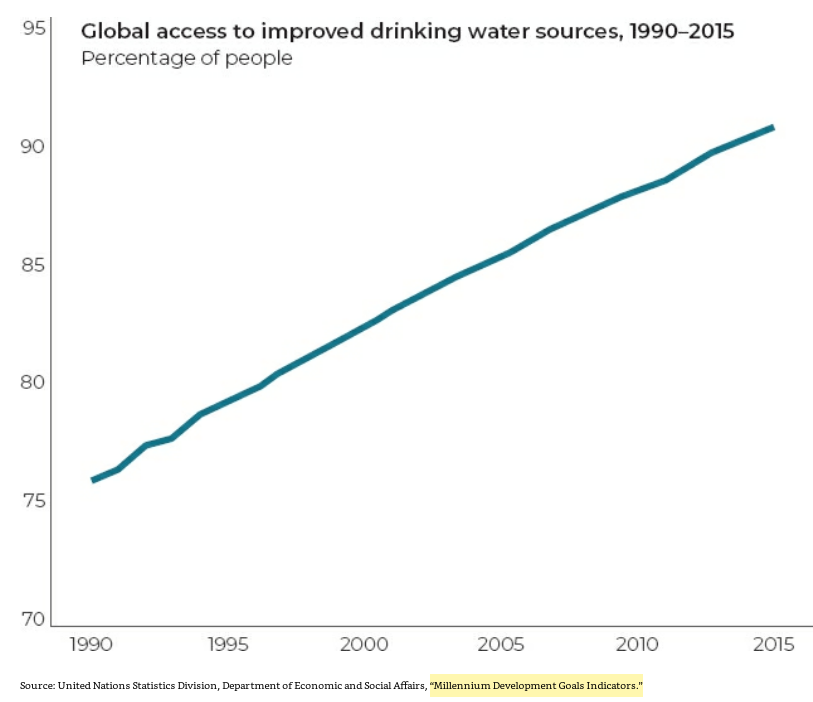
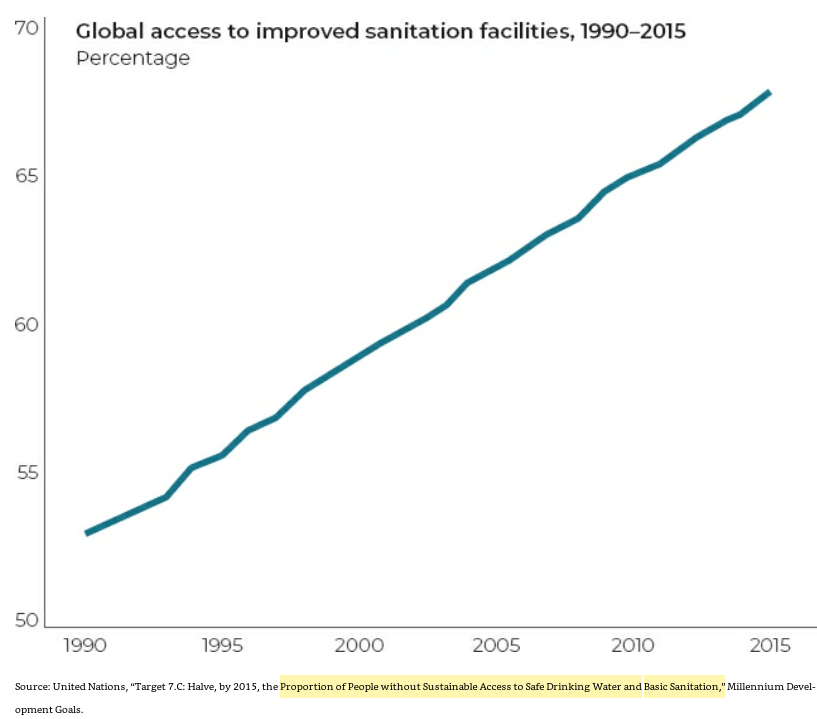
51/ "In 2016, 73% of the population of sub-Saharan Africa, the world's poorest region, owned what was once a plaything of the rich.
"It enables citizenry in authoritarian countries to communicate.
"Internet data fell from $1200 megabits/second to $0.63 (1998-2015)." (p. 143)


"It enables citizenry in authoritarian countries to communicate.
"Internet data fell from $1200 megabits/second to $0.63 (1998-2015)." (p. 143)

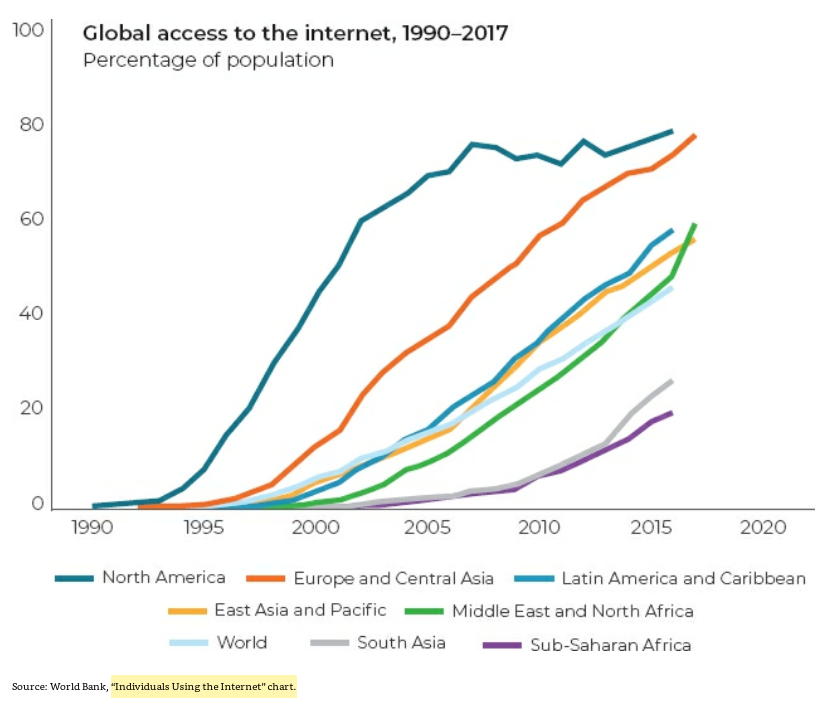
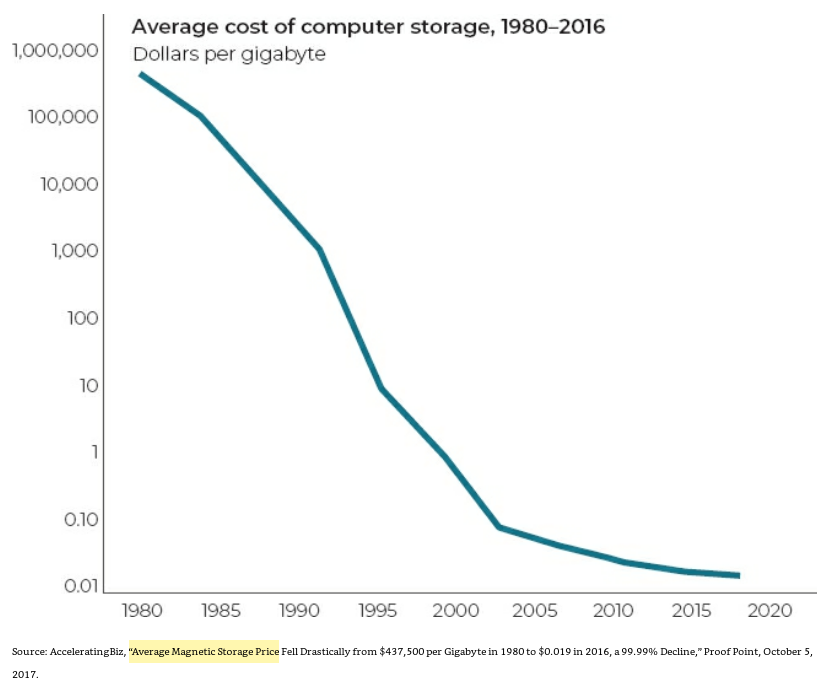
52/ "In spite of a recent bout of protectionism in the U.S., American tariffs amounted to only 1.66% in 2017. Thus, Europe, North America, and East Asia continue to be the leaders in tariff reduction." (p. 149)
(Applied tariff rates can be considerably lower than maximum rates.)
(Applied tariff rates can be considerably lower than maximum rates.)

53/ "As American households grew wealthier, they spent an ever-smaller proportion of their incomes on the basic necessities of food, clothing, and housing.
"In 1900 (1970, 2018), the average new home provided 140 (570, 1016) square feet per person in a family." (p. 152)
"In 1900 (1970, 2018), the average new home provided 140 (570, 1016) square feet per person in a family." (p. 152)
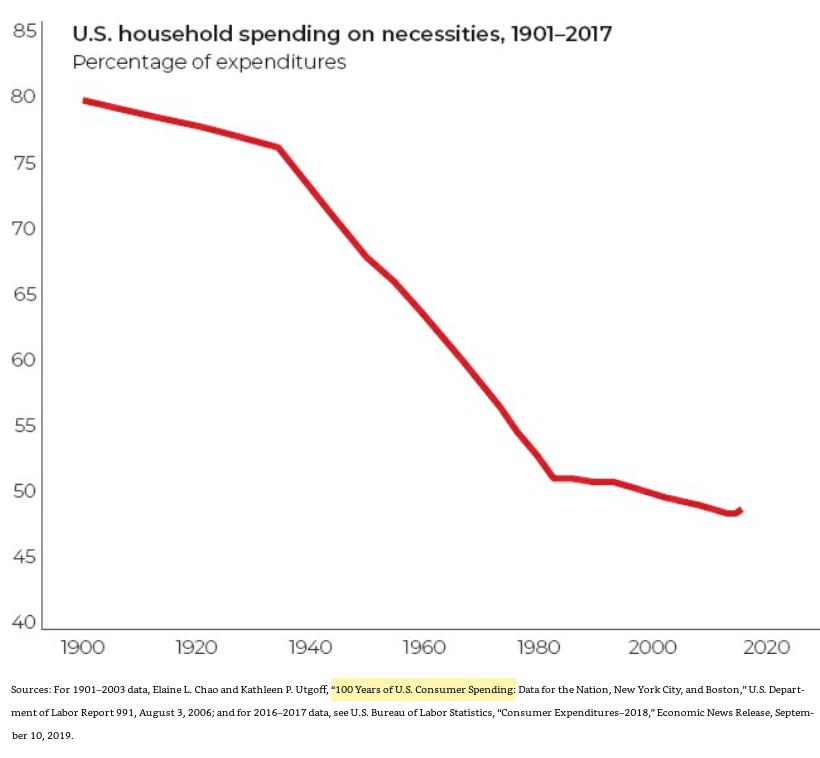
54/ "Until recently, it was not uncommon for several generations to live under the same roof, sleeping in the only heated room.
"Humans shared living space with livestock to keep it safe from predators & thieves. That created a fertile ground for vermin & parasites." (p. 162)
"Humans shared living space with livestock to keep it safe from predators & thieves. That created a fertile ground for vermin & parasites." (p. 162)

55/ "The speed of adoption of new products is increasing. It took a half century from the invention of the telephone to the time when 50% of U.S. households owned one.
"After only 12 years of smartphones hitting the stores, 50% of individual Americans possessed one." (p. 154)
"After only 12 years of smartphones hitting the stores, 50% of individual Americans possessed one." (p. 154)
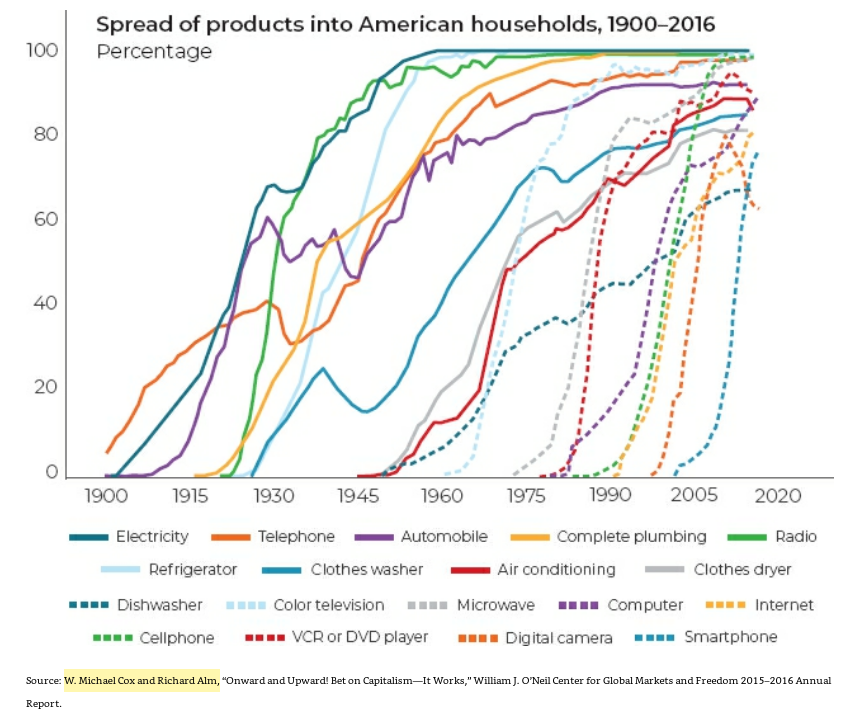
56/ "Polls found high levels of concern over crime during the past decade, even though violent crime rates have been falling for two decades.
"Most studies find that immigrants, both legal & undocumented, commit crimes at a lower rate than do native-born citizens." (p. 156)
"Most studies find that immigrants, both legal & undocumented, commit crimes at a lower rate than do native-born citizens." (p. 156)

57/ "In 1944 (1972), 45% (97%) of whites agreed that blacks should have “as good a chance as white people to get any kind of job.”
"In 1958, only 37% of whites said they would vote for a black candidate for president. By 1997, that figure had risen to 95% ." (p. 158)
"In 1958, only 37% of whites said they would vote for a black candidate for president. By 1997, that figure had risen to 95% ." (p. 158)
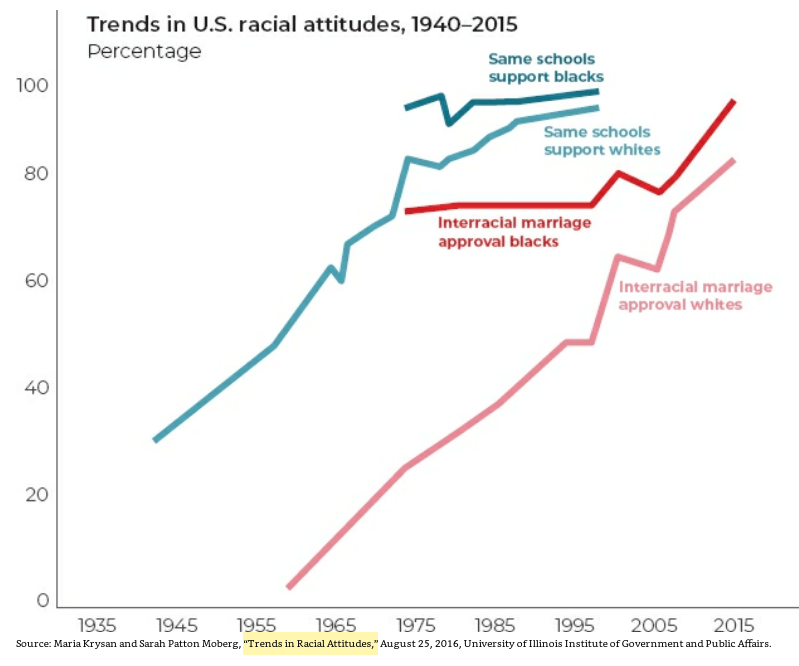
58/ "As a result of local municipal action, toxic emissions had been falling for decades before the EPA was created in 1970.
"For example, ambient sulfur dioxide had fallen by 58% in NYC during the seven years preceding the adoption of the Clean Air Act." (p. 160)
"For example, ambient sulfur dioxide had fallen by 58% in NYC during the seven years preceding the adoption of the Clean Air Act." (p. 160)
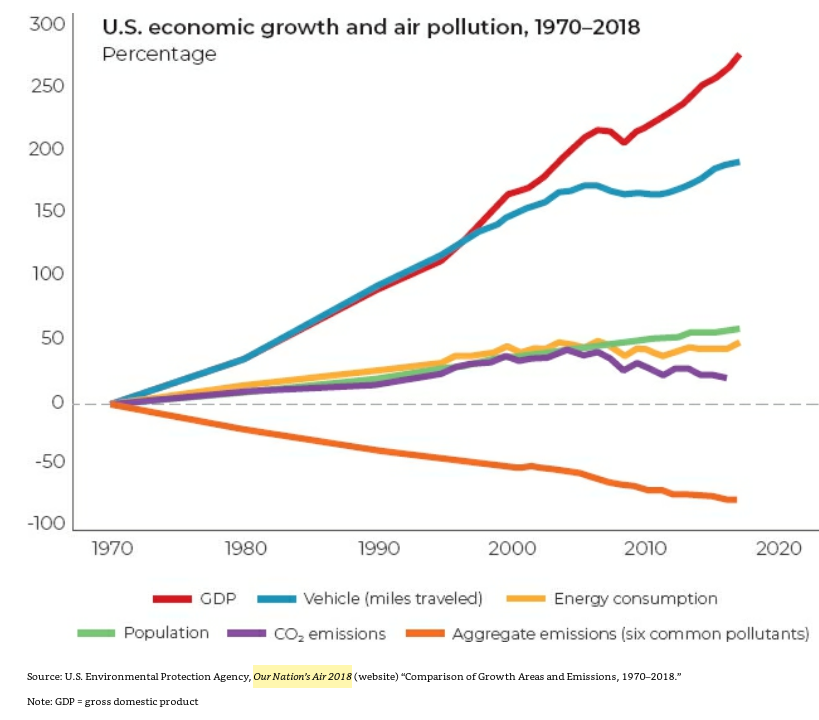
59/ "Before deregulation, when airlines could not compete based on fares or territory, they competed on service alone. Back then, flying was a glamorous affair effectively restricted to the rich." (p. 166) 
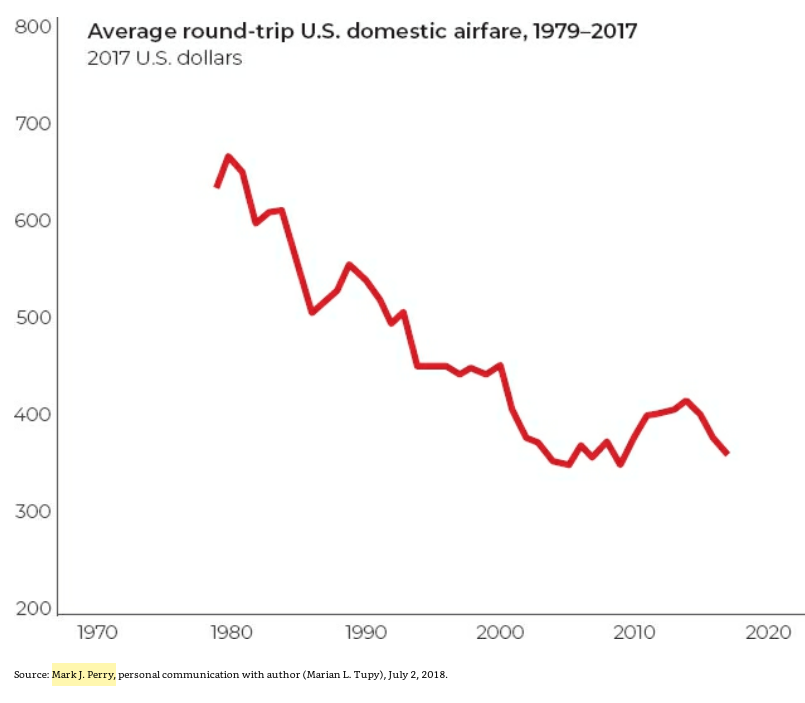
60/ "Over the past century, vaccination has likely prevented deaths of 3-4 million Americans and greatly reduced hospitalization rates & the sheer misery of illness.
"In addition, the modern world is not experiencing a rising epidemic of cancer but rather its opposite." (p. 168)

"In addition, the modern world is not experiencing a rising epidemic of cancer but rather its opposite." (p. 168)
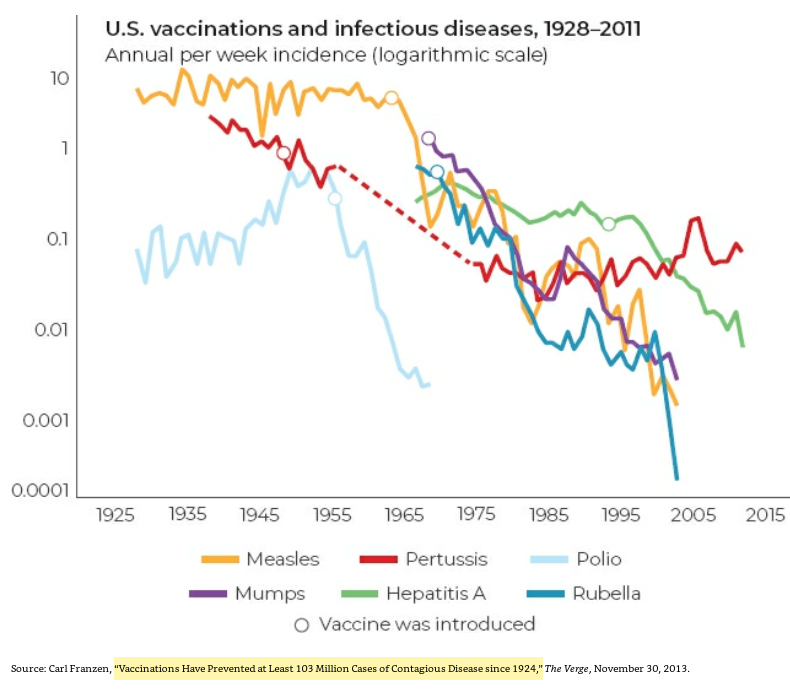

• • •
Missing some Tweet in this thread? You can try to
force a refresh












